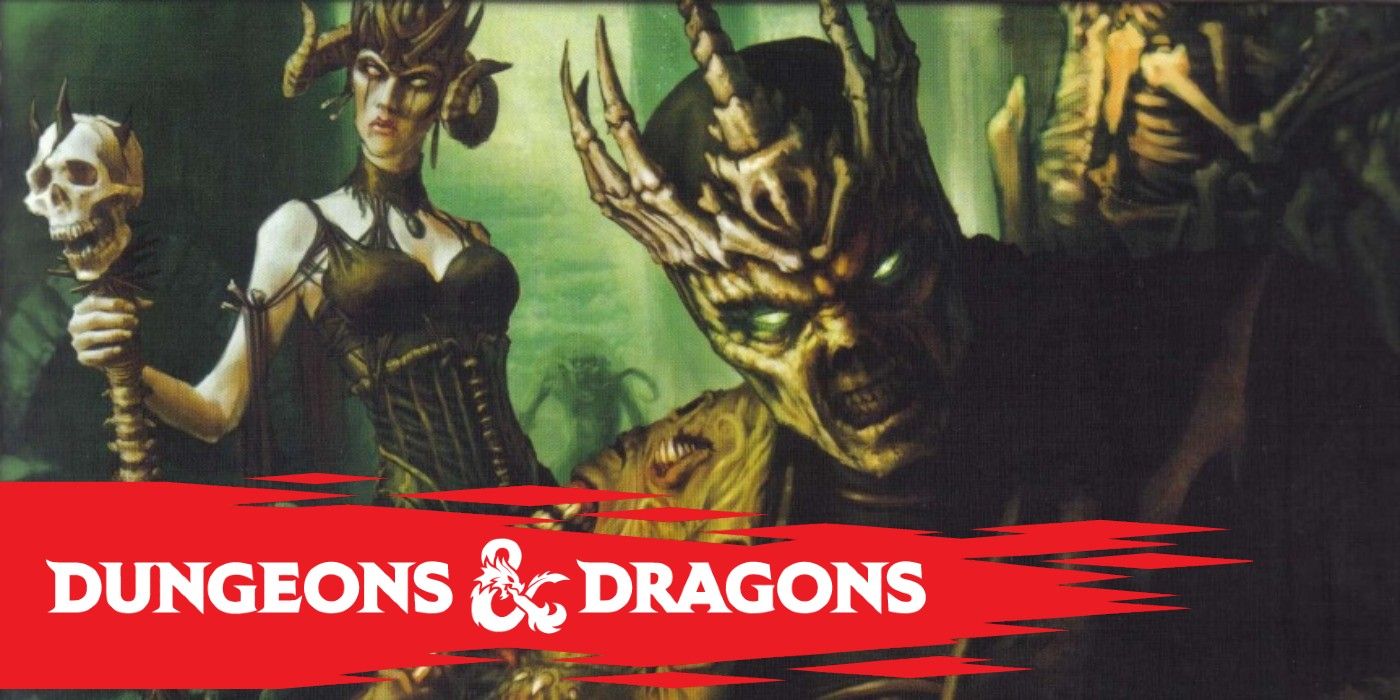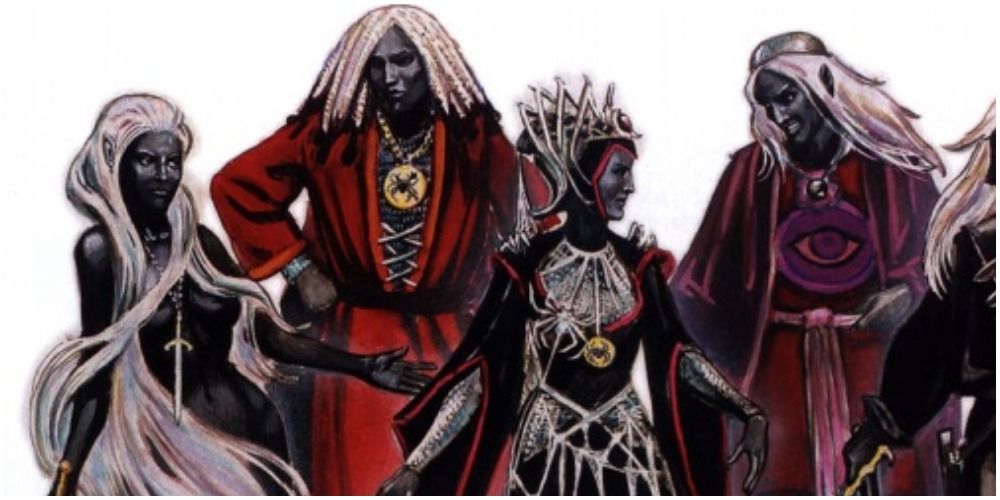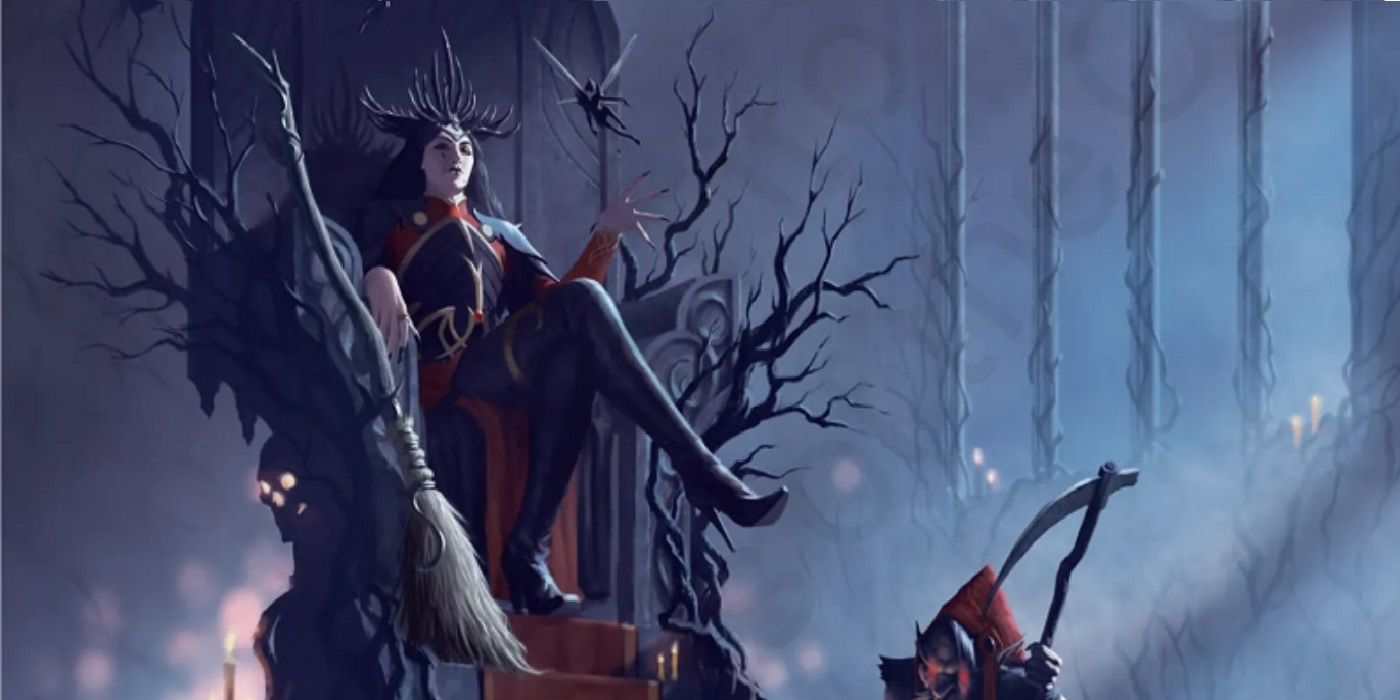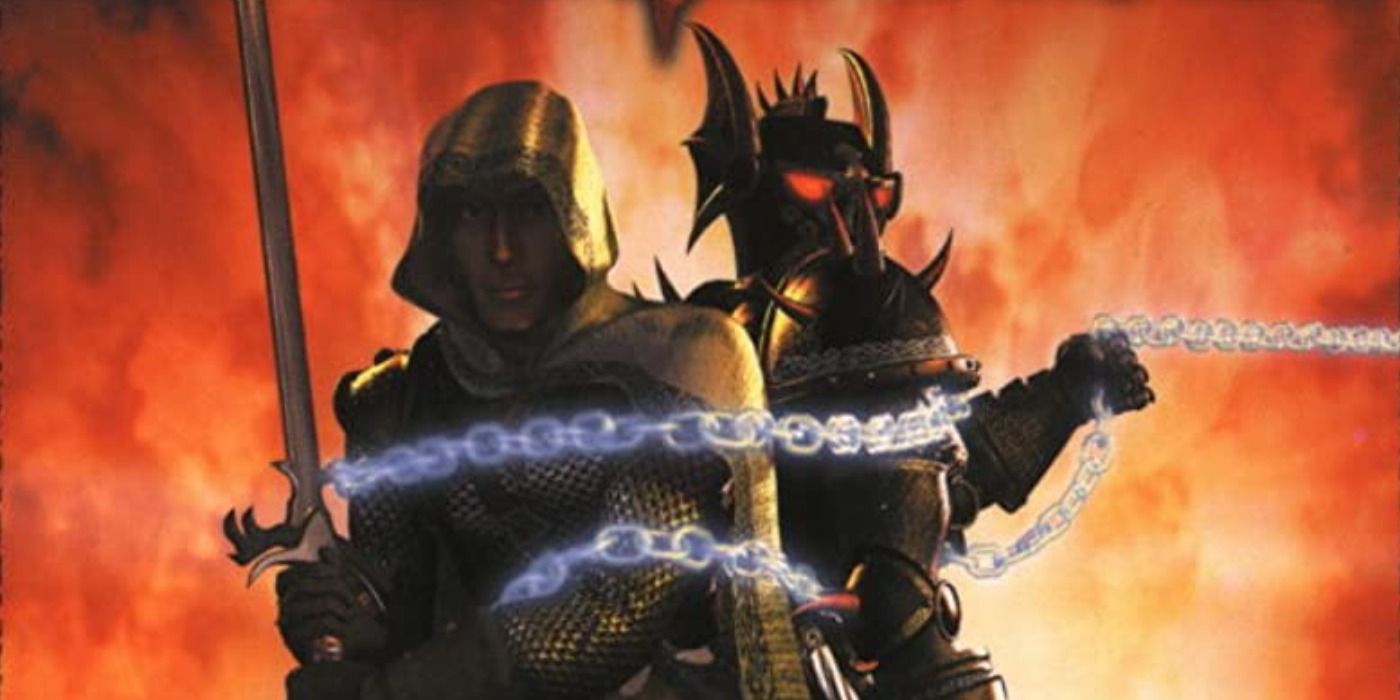Dungeons & Dragons is a game about heroes banding together to vanquish the forces of evil, in order to save the world from harm. But what happens when the players want to take a walk on the dark side, and become the villains of the tale. There are D&D games centered around evil characters, but they come with risks, as there's always a chance that players will turn on each other, leading to PvP deaths and hurt feelings among the group.
There are lots of video game RPGs that offer the chance to play a villain, including the D&D ones, as it was possible for an evil character to sit upon the Throne of Bhaal in the Baldur's Gate series. It's a lot easier to play an evil character in a video game, as the story only needs to satisfy the needs of a single player. D&D is a game that is meant to be played with several people, and one of the reasons why people should never split the party is that it restricts the amount of time that people are playing, as the DMs attention needs to keep changing. The same is true in evil games, as the more the player tries to strike out on their own, the more the DM needs to focus on their individual goals.
There is plenty of fun to be had in evil D&D alignment games, but players need to be aware of what they're getting into before rolling up their characters. A group of Lawful Evil characters should have no problem cooperating, but Neutral and Chaotic Evil characters will struggle to put aside their own desires to work toward a common goal. There are several options available for DMs and players to ensure that an evil group sticks together.
Evil D&D Campaigns Should Create A Shared Background To Establish Trust
The average D&D party consists of Good and Neutral-aligned characters, who come together through a shared purpose and pool their skills, so that they may accomplish more as a group than as individuals. The best way to accomplish this is to start outside the boundaries of the game. If the players really want to play an evil party, then the rules for the game need to be laid out in a Session Zero before the game begins. A party consisting of evil characters has more of an opportunity to go into dark and disturbing areas of storytelling than regular groups, so it's imperative that the group lays down the groundwork for what is appropriate behavior before anyone starts building a character. It's important that all players' needs are treated with respect during a D&D game, which is why everyone needs to know what they are getting into when starting an evil D&D game.
Once the groundwork is laid out in one of D&D's Session Zero meetings, the group needs to work out rules for cooperation. The campaign won't last long if everyone creates the Joker and the first session ends in a battle royale between the party. The group needs to agree that the characters will cooperate with each other for the duration of the campaign, with a penalty for those who go off the reservation. The aim of D&D is to have fun and nothing creates bad blood between players quicker than betrayal. If the group needs an in-universe reason for the characters to trust each other, then they should come up with a shared background. It's possible that the players grew up together or have been part of the same organization for a long time. The multiverse can be a harsh place and they only trust each other to watch their backs, in an "us vs. the world" mentality.
Evil D&D Party Members Can Have A Powerful Patron Who Expects Results
If the groups need an in-universe reason to stick with each other but don't want to share a background, then they can use D&D's group patron rules. It's possible that the party works for a higher power that has brought them together, in order to complete tasks in their name. This patron could be anything from a powerful villain, a fiend with contacts on the Prime Material Plane, or even an evil god. There are many evil cults that are faced in D&D games and a group that worships an entity like Vecna or Bhaal will have a reason to stick together, at least for the short term.
One of the benefits of this kind of group structure is that the evil D&D party's campaign will have an easier time navigating. The party has been brought together by a more powerful evil being and they know that the price of failure is death. This means that they have to stick together and pool their talents, as it's the only way they have a chance of surviving. It's likely that their quest will be difficult and dangerous, otherwise, a group wouldn't be needed to complete it. Even selfish characters will see the benefit in cooperating if it means saving their own neck in the long run and dealing with characters they might not like or respect is better than facing the wrath of their master.
The Lives Of Evil D&D Characters Can Be Are Magically Bound To Each Other
The DMs who want a more concrete solution to the problem of evil characters can take inspiration from Beyond Divinity. This is the second game in the Divinity series, with most people likely being familiar with the most recent entry, Divinity: Original Sin 2. In Beyond Divinity, the player creates two characters: a paladin and a death knight. At the beginning of the game, the two characters are soul forged, which means that one of them dying will lead to the death of the other, forcing the two to work together. The studio behind the Divinity series on Baldur's Gate 3 at the moment.
A similar situation in a D&D game could also ensure the good behavior of an evil party. At the start of the campaign, the group is afflicted with a curse that binds their life force together, and the permanent death of one characters leads to the death of the rest of the group. This almost turns D&D into an ironman run game, where the group must always be ready to stop a string of death saves from happening. There are also some lighter applications of this method, such as a curse that acts in a similar manner to the old versions of the geas spell, where the players are magically bound to perform a task to the best of their abilities, and killing a potential ally is either impossible or leads to severe penalties, leading to an uneasy, but necessary alliance between evil Dungeons & Dragons characters.




